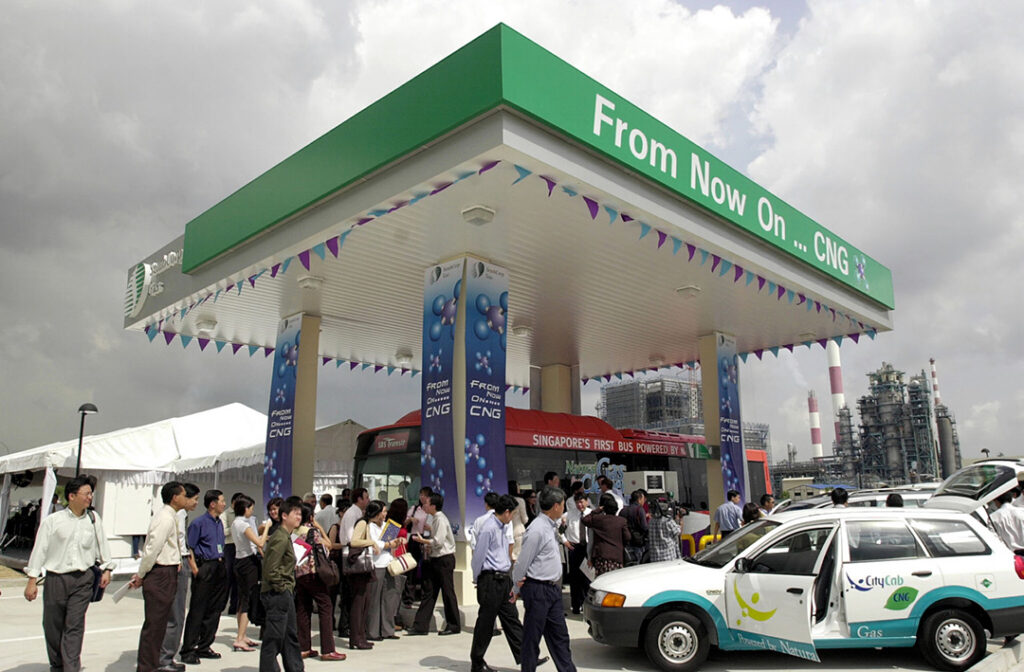A friend once showed me an image: Africa at night, shrouded in darkness, with sparse lights dotting the edges. It was a stark and uncomfortable image –the “Dark Continent”– yet it conceals the truth of Africa’s immense potential. While Africa is endowed with rich natural resources and vibrant human capital, it still grapples with substantial power challenges. This is an unfortunate testament to our leaders and, by extension, ourselves. But change is on the horizon.
Current narratives within the energy sector suggest a critical point in Africa’s energy trajectory – a paradigm shift from reliance on traditional fossil fuels to a future hinged on clean energy sources. A move not only prompted by the urgent need to address the global climate crisis but also by Africa’s own first-hand experience with its devastating impacts.
The energy transition in Africa is not a simple binary choice between fossil fuels and renewables. Instead, it is a complex navigation through a spectrum of energy sources, each with unique benefits and drawbacks. Fossil fuels, with their environmental degradation and economic instability due to fluctuating global oil prices, pose significant challenges. Yet, we must acknowledge that for Africa’s still-developing economies, an abrupt shift away from fossil fuels without the requisite infrastructure and technological readiness could be catastrophic.
The International Renewable Energy Agency (IRENA) suggests that to secure a sustainable and inclusive energy future, Africa requires an optimal mix of renewable and non-renewable resources, tailored to the continent’s diverse needs and geographies. This balance, however, cannot be achieved without strong and clear policy guidance to shape investment in infrastructure, drive research and development in energy technologies, and foster sustainable practices and innovation.
The phrase “energy transition” often evokes images of a sweeping shift from unsustainable, inequitable energy sources to sustainable, equitable alternatives. But for Africa, this transition holds a deeper, more potent meaning. It’s not just about replacing high-carbon energy sources with low or zero-carbon ones. Instead, it’s about illuminating the heart of the “Dark Continent”, providing reliable and sustainable energy to every corner, every community, and every individual. It’s about turning the lights on for more than 800 million people who are presently cloaked in the darkness of electricity deficiency, and aligning with Sustainable Development Goal (SDG) 7.
This transition is not just a matter of progress; it’s a matter of survival and growth. Today, several southern African countries are reeling under debilitating power shortages, hitting businesses, especially those that can’t afford backup generators, hard. In a continent where more than 60% of employment is informal an unreliable energy supply can be catastrophic. Take the case of Kuda Musasiwa, the entrepreneur behind Fresh in a Box, a start-up that delivers fresh produce operating in Zimbabwe and South Africa. Speaking out on Twitter, Musasiwa said the power disruptions were not only harming businesses but also exposing the public to health hazards, for example, where there is a disruption of power in the cold chain for meat products. Musasiwa’s case is just a microcosm of the macrocosm.
The energy transition also represents Africa’s commitment to the global fight against climate change. As nations worldwide advocate for the cessation of fossil fuel usage, Africa needs to strike a delicate balance. We have to eradicate energy poverty for millions, but we also must replace harmful alternatives like firewood and charcoal that contribute to deforestation and climate change.
To navigate this complex transition, Africa needs an arsenal of comprehensive policies that respect its unique socioeconomic milieu, walking the tightrope between advancing renewable energy technologies, honouring local contexts and conditions, and fostering inclusive growth. Here are a few potential policy directions we can explore:
Boosting renewable energy investments: Africa is a powerhouse of renewable energy potential, yet it only draws 2% of global clean energy investments. We need policies that turbocharge investment in this sector, such as tax incentives, feed-in tariffs, and favourable loans and grants.
Streamlining regulations: a significant roadblock to investment in Africa, including the energy sector, is the labyrinth of licensing procedures. To facilitate renewable energy initiatives, we need to review and streamline government regulations, including licensing and import duties for solar panels and batteries.
Building capacity: education and capacity building should form the bedrock of our policy agenda. By investing in education and training in renewable energy, we can build a skilled workforce, broaden the scope of the renewable energy sector, and create new jobs, contributing to a sustainable and inclusive transition.
Aligning policies: energy transition policies aren’t standalone; they need to sync with broader development policies. The African Union (AU) Executive Council’s African Common Position on Energy Access and Just Energy Transition offers a valuable framework, emphasising universal energy access, affordability, and the promotion of clean energy technologies for sustainable growth and improved living standards.
The innovative Singapore Energy Transition (SET) blueprint offers a case study for African countries. An old Shona proverb wisely advises, “kugara nhaka huona dzevamwe”, roughly translating as “learn from others before embarking on a complex journey”. In the quest for an effective energy transition, Africa doesn’t need to start from scratch but can glean insights from nations that have already embarked on this journey, adapting their strategies to the continent’s unique geographical and socioeconomic fabric. A perfect example of such a journey is Singapore, a city-state with limited natural resources but which has made remarkable strides in energy transition.
Singapore’s Energy Market Authority (EMA) devised an innovative energy transition model dubbed the “Four Switches”. This blueprint is a balanced ensemble of natural gas, solar power, regional power grids, and low-carbon alternatives, all working in harmony to fulfil the nation’s energy demands while substantially reducing carbon emissions. At its core, this strategy leverages natural gas, the cleanest fossil fuel, as the primary energy source, thus ensuring reliable base-load power.
Their “solar switch” taps into the abundant sunlight Singapore enjoys. To optimise solar power generation, Singapore has ingeniously advanced its solar photovoltaic systems, deploying creative solutions like floating solar panels in offshore spaces, overcoming the limitation of land scarcity. The third “switch” involves integration into regional power grids, facilitating seamless electricity import and export. The final “switch” focuses on future-ready clean energy technologies, investing in low-carbon alternatives such as hydrogen and carbon capture, utilisation, and storage (CCUS) technologies.
Undergirding these “Four Switches” is Singapore’s ambitious Long-Term, Low-Emissions Development Strategy (LEDS). This strategy aims to slash emissions by 50% by 2050, setting the stage for achieving net-zero emissions as soon as feasible. Singapore’s forward-thinking approach recognises the complexity and long-term nature of energy transitions, requiring meticulous planning and careful management of trade-offs.
Singapore’s strategy offers invaluable lessons for Africa. The continent enjoys abundant sunshine and doesn’t face Singapore’s land constraints. Through close collaboration at the AU level and among regional blocks, Africa can assimilate the lessons from Singapore, tailoring them to create and implement a balanced energy mix. This approach would help eradicate energy poverty while simultaneously driving decarbonisation.
The journey towards Africa’s energy transition must be grounded in well-conceived policies that promote optimal energy mixes, moving beyond the simplistic binary choice between fossil fuels and renewables. With the right policy measures, Africa can not only secure energy sufficiency but also ensure that this transition catalyses sustainable economic development. The goal is clear: a brighter, energy-sufficient future for Africa, where every corner of the continent is illuminated, every home powered, and every business energised.

Adio-Adet Dinika is a writer, researcher and affiliated PhD Fellow at the Bremen International Graduate School of Social Science (BIGSSS). His areas of interest are Digitalisation and the Future of Work. He has published opinion pieces on Digitalisation and socio-economic development in several print and online publications, and his first unpublished novel, They like us dead, was long listed for the 2021 James Currey Prize for African Literature. He is currently based in Bremen, Germany.




1 Comment
Á Good read, and informative